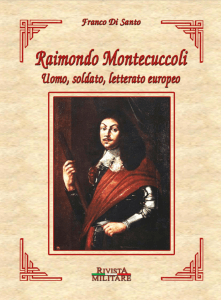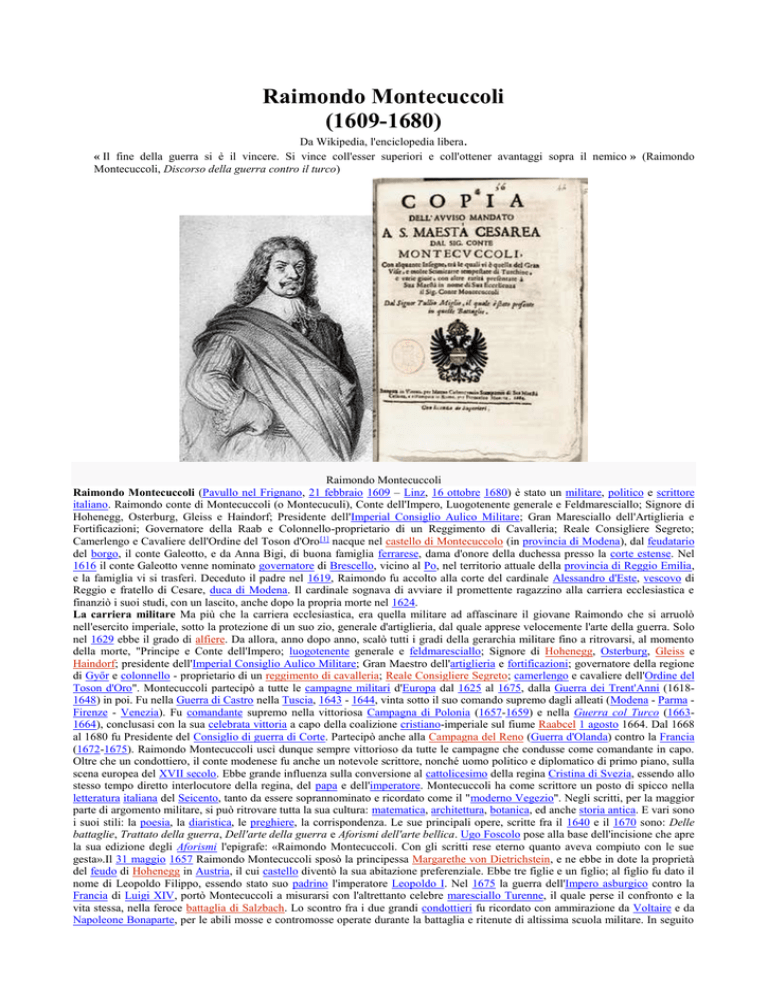
Raimondo Montecuccoli
(1609-1680)
Da Wikipedia, l'enciclopedia libera.
« Il fine della guerra si è il vincere. Si vince coll'esser superiori e coll'ottener avantaggi sopra il nemico » (Raimondo
Montecuccoli, Discorso della guerra contro il turco)
Raimondo Montecuccoli
Raimondo Montecuccoli (Pavullo nel Frignano, 21 febbraio 1609 – Linz, 16 ottobre 1680) è stato un militare, politico e scrittore
italiano. Raimondo conte di Montecuccoli (o Montecuculi), Conte dell'Impero, Luogotenente generale e Feldmaresciallo; Signore di
Hohenegg, Osterburg, Gleiss e Haindorf; Presidente dell'Imperial Consiglio Aulico Militare; Gran Maresciallo dell'Artiglieria e
Fortificazioni; Governatore della Raab e Colonnello-proprietario di un Reggimento di Cavalleria; Reale Consigliere Segreto;
Camerlengo e Cavaliere dell'Ordine del Toson d'Oro [1] nacque nel castello di Montecuccolo (in provincia di Modena), dal feudatario
del borgo, il conte Galeotto, e da Anna Bigi, di buona famiglia ferrarese, dama d'onore della duchessa presso la corte estense. Nel
1616 il conte Galeotto venne nominato governatore di Brescello, vicino al Po, nel territorio attuale della provincia di Reggio Emilia,
e la famiglia vi si trasferì. Deceduto il padre nel 1619, Raimondo fu accolto alla corte del cardinale Alessandro d'Este, vescovo di
Reggio e fratello di Cesare, duca di Modena. Il cardinale sognava di avviare il promettente ragazzino alla carriera ecclesiastica e
finanziò i suoi studi, con un lascito, anche dopo la propria morte nel 1624.
La carriera militare Ma più che la carriera ecclesiastica, era quella militare ad affascinare il giovane Raimondo che si arruolò
nell'esercito imperiale, sotto la protezione di un suo zio, generale d'artiglieria, dal quale apprese velocemente l'arte della guerra. Solo
nel 1629 ebbe il grado di alfiere. Da allora, anno dopo anno, scalò tutti i gradi della gerarchia militare fino a ritrovarsi, al momento
della morte, "Principe e Conte dell'Impero; luogotenente generale e feldmaresciallo; Signore di Hohenegg, Osterburg, Gleiss e
Haindorf; presidente dell'Imperial Consiglio Aulico Militare; Gran Maestro dell'artiglieria e fortificazioni; governatore della regione
di Győr e colonnello - proprietario di un reggimento di cavalleria; Reale Consigliere Segreto; camerlengo e cavaliere dell'Ordine del
Toson d'Oro". Montecuccoli partecipò a tutte le campagne militari d'Europa dal 1625 al 1675, dalla Guerra dei Trent'Anni (16181648) in poi. Fu nella Guerra di Castro nella Tuscia, 1643 - 1644, vinta sotto il suo comando supremo dagli alleati (Modena - Parma Firenze - Venezia). Fu comandante supremo nella vittoriosa Campagna di Polonia (1657-1659) e nella Guerra col Turco (16631664), conclusasi con la sua celebrata vittoria a capo della coalizione cristiano-imperiale sul fiume Raabcel 1 agosto 1664. Dal 1668
al 1680 fu Presidente del Consiglio di guerra di Corte. Partecipò anche alla Campagna del Reno (Guerra d'Olanda) contro la Francia
(1672-1675). Raimondo Montecuccoli uscì dunque sempre vittorioso da tutte le campagne che condusse come comandante in capo.
Oltre che un condottiero, il conte modenese fu anche un notevole scrittore, nonché uomo politico e diplomatico di primo piano, sulla
scena europea del XVII secolo. Ebbe grande influenza sulla conversione al cattolicesimo della regina Cristina di Svezia, essendo allo
stesso tempo diretto interlocutore della regina, del papa e dell'imperatore. Montecuccoli ha come scrittore un posto di spicco nella
letteratura italiana del Seicento, tanto da essere soprannominato e ricordato come il "moderno Vegezio". Negli scritti, per la maggior
parte di argomento militare, si può ritrovare tutta la sua cultura: matematica, architettura, botanica, ed anche storia antica. E vari sono
i suoi stili: la poesia, la diaristica, le preghiere, la corrispondenza. Le sue principali opere, scritte fra il 1640 e il 1670 sono: Delle
battaglie, Trattato della guerra, Dell'arte della guerra e Aforismi dell'arte bellica. Ugo Foscolo pose alla base dell'incisione che apre
la sua edizione degli Aforismi l'epigrafe: «Raimondo Montecuccoli. Con gli scritti rese eterno quanto aveva compiuto con le sue
gesta».Il 31 maggio 1657 Raimondo Montecuccoli sposò la principessa Margarethe von Dietrichstein, e ne ebbe in dote la proprietà
del feudo di Hohenegg in Austria, il cui castello diventò la sua abitazione preferenziale. Ebbe tre figlie e un figlio; al figlio fu dato il
nome di Leopoldo Filippo, essendo stato suo padrino l'imperatore Leopoldo I. Nel 1675 la guerra dell'Impero asburgico contro la
Francia di Luigi XIV, portò Montecuccoli a misurarsi con l'altrettanto celebre maresciallo Turenne, il quale perse il confronto e la
vita stessa, nella feroce battaglia di Salzbach. Lo scontro fra i due grandi condottieri fu ricordato con ammirazione da Voltaire e da
Napoleone Bonaparte, per le abili mosse e contromosse operate durante la battaglia e ritenute di altissima scuola militare. In seguito
alla vittoria, le truppe di Montecuccoli marciarono verso la città di Haguenau, ribellatasi all'autorità francese, costringendo il principe
di Condé a togliere l'assedio. Fu questa l'ultima azione militare del condottiero modenese che, alla fine della campagna, si ritirò a
Linz, dove scrisse buona parte delle sue opere sull'arte guerresca e dove morì, a 71 anni, in seguita a un'emorragia. Aveva disposto
nel testamento di essere sepolto a Vienna, nella chiesa dei Gesuiti dei Nove Cori Angelici. Ugo Foscolo definì Raimondo
Montecuccoli "il maggiore e il più dotto fra i capitani nati in Italia dopo il risorgimento dalla barbarie". Nell'idea del Foscolo la
barbarie è il Medio Evo, quindi Raimondo Montecuccoli è indicato come il più grande ed erudito capo militare italiano dell'epoca
moderna. A Raimondo Montecuccoli [1] fu intitolato un celebre incrociatore leggero della Marina Militare[2] (che, con il varo del
gemello Muzio Attendolo, divenne anche un tipo della classe "Condottieri"); varato nel 1931, segnalatosi in numerose azioni durante
la Seconda guerra mondiale, consegnatosi a Malta dopo l'8 settembre, fu poi nave scuola e venne disarmato nel 1967.
Onorificenze
Cavaliere dell'Ordine del Toson d'oro Fu nominato Principe del Sacro Romano Impero e Duca di
Melfi (Fonte: Chambers Byographical Dictionary)
Predecessore:
Feldmaresciallo del Sacro Romano
Impero
Successore:
Adam Forgach de
Ghymes
1658-1659
Federico di BadenDurlach
Note
1.
^ Questa è la designazione ufficiale come indicata da Raimondo Luraghi in Le opere di Raimondo Montecuccoli a cura di
Raimondo Luraghi, 3 vol, edite a cura dell'USSME, 2ª edizione 2000 (Roma)
2. ^ Raimondo Montecuccoli - Incrociatore leggero
Bibliografia Raimondo Montecuccoli, Le opere di Raimondo Montecuccoli. Tomo I, Roma, Ufficio Storico dello Stato Maggiore
dell'Esercito, 2000.
Wikisource contiene opere originali di Raimondo Montecuccoli- Wikimedia Commons contiene file multimediali su Raimondo
Montecuccoli. Sito su Montecuccoli Raimondo Montecuccoli dal Dizionario del Pensiero Forte
Voci correlate Battaglia di San Gottardo (1664)
Il ponte del castello di Sàrvar, residenza di Ferenc Nàdasdy, il maggiore dei magnati ungheresi, alfiere in Ungheria della cultura
italiana, promotore della rivolta contro Vienna che dopo la vittoria di Montecuccoli ha ceduto due città importanti alla Porta.
Scoperta la rivolta, sarà decapitato. Archivio Nuova terra antica- La valle della Raab vista dal lieve rilievo, l'ultimo colle austriaco,
dal quale il Marchese avrebbe comandato la battaglia.Oltre le colline all'orizzonte, in territorio magiaro, era il grande accampamento
del Gran Vizir. Foto A. Saltini, Archivio Nuova terra antica
Raimondo Montecuccoli
From Wikipedia, the free encyclopedia
Count Raimondo Montecúccoli
Raimondo, Count of Montecúccoli or Montecucculi (German: Raimondo Graf Montecúccoli) (21 February, 1608 or 1609 – 16
October 1680) was an Italian military general who also served as general for the Austrians, and was also a prince of the Holy Roman
Empire and Neapolitan Duke of Melfi. Montecuccoli was born in the castle of the same name in Pavullo nel Frignano, near Modena.
His family was of Burgundian origin and had settled in north Italy in the 10th century.
Early military service At the age of sixteen Montecuccoli began as a private soldier under his uncle, Count Ernest Montecuccoli, a
distinguished Austrian general (d. 1633). Four years later, after much active service in Germany and the Low Countries, he became a
captain of infantry. He was severely wounded at the storming of New Brandenburg, and again in the same year (1631) at the first
battle of Breitenfeld, where he fell into the hands of the Swedes. He was again wounded at Lützen in 1632, and on his recovery was
made a major in his uncle's regiment. Shortly afterwards he became a lieutenant-colonel of cavalry. He did good service at the first
battle of Nordlingen (1634), and at the storming of Kaiserslautern in the following year won his colonelcy by a feat of arms of
unusual brilliance, a charge through the breach at the head of his heavy cavalry. He fought in Pomerania, Bohemia and Saxony
(surprise of Wolmirstadt, battles of Wittstock and Chemnitz), and in 1639 he was taken prisoner at Melnik and detained for two and a
half years in Stettin and Weimar. In captivity he studied military science, and also geometry in Euclid, history in Tacitus, and
architecture in Vitruvius, and planned his great work on war.
As a commanding officer Returning to Italy and to the field in 1642, Montecuccoli commanded mercenaries loyal to the Duke of his
native Modena during the First War of Castro[1] but when that conflict ground to an unproductive stalemate he departed. His
involvement, though understandable given his allegiance to Modena, is nonetheless unusual in that his service pitted him against the
papal forces of Pope Urban VIII. In 1643 he was promoted to lieutenant-field-marshal and obtained a seat in the council of war. In
1645-46 he served in Hungary against Prince Rákóczy of Transylvania, on the Danube and Neckar against the French, and in Silesia
and Bohemia against the Swedes. The victory of Triebel in Silesia won him the rank of general of cavalry, and at the battle of
Zusmarshausen in 1648 his stubborn rearguard fighting rescued the imperialists from annihilation. For some years after the Peace of
Westphalia Montecuccoli was chiefly concerned with the business of the council of war, though he went to Flanders and England as
the representative of the emperor, and to Sweden as the envoy of the pope to Queen Christina, and at Modena his lance was
victorious in a great tourney. In 1657, soon after his marriage with Countess Margarethe de Dietrichstein, he took part in, and after a
time commanded, an expedition against Rákóczy and the Swedes who had attacked the king of Poland. He became field-marshal in
the imperial army, and with the Great Elector of Brandenburg completely defeated Rákóczy and his allies (peace of Oliva, 1660).
From 1661 to 1664 Montecuccoli with inferior numbers defended Austria against the Turks, but at St. Gotthard Abbey, on the Rába,
he and Carl I. Ferdinand Count of Montenari defeated the Turks so completely that they made a truce for twenty years (1 August
1664). They were given the Order of the Golden Fleece, and Montecuccoli became president of the council of war and director of
artillery. He also devoted much time to compiling his various works on military history and science. He opposed the progress of the
French arms under Louis XIV, and when the inevitable war broke out he received command of the imperial forces. In the campaign
of 1673 he completely out-manoeuvred his rival Turenne on the Neckar and the Rhine, captured Bonn and joined his army with that
of the prince of Orange on the lower Rhine. He retired from the army when, in 1674, the Great Elector was named command in chief,
but the brilliant successes of Turenne in the winter of 1674 and 1675 brought him back. For months the two famous commanders
manoeuvred against each other in the Rhine valley, but on the eve of a decisive battle Turenne was killed and Montecuccoli promptly
invaded Alsace, where he engaged in a war of manoeuvre with the Great Condé. The siege of Philipsburg was Montecuccoli's last
achievement in war. The rest of Montecuccoli's life was spent in military administration and literary and scientific work at Vienna. In
1679 the emperor made him a prince of the empire, and shortly afterwards he received the dukedom of Melfi from the King of Spain.
Montecuccoli died in an accident at Linz in October 1680. With the death of his only son Leopold Philip Montecuccoli in 1698 the
principality became extinct, but the title of count descended through his daughters to two branches, Austrian and Modenese. As a
general, Montecuccoli shared with Turenne and Condé the first place among European soldiers of his time. His Memorie della
guerra profoundly influenced the age which followed his own; nor have modern conditions rendered the advice of Montecuccoli
wholly valueless. The Memorie della guerra was published at Venice in 1703 and at Cologne in 1704. A French edition was issued
in Paris in 1712 and a Latin edition appeared in 1718 at Vienna, and the German Kriegsnachrichten des Fürsten Raymundi
Montecuccoli was issued at Leipzig in 1736. Of this work there are manuscripts in various libraries, and many memoirs on military
history, tactics, fortification, written in Italian, Latin and German, remain still unedited in the archives of Vienna. The collected
Opere di Raimondo Montecuccoli were published at Milan (1807), Turin (1821) and Venice (1840), and include political essays and
poetry. In 1934 the Italian navy launched the Raimondo Montecuccoli, a Condottieri class light cruiser named in his honour which
served with the Regia Marina during World War II.
Quotes Montecuccoli noted one of the obvious problems of military conflict [2]: For war, you need three things; 1. Money. 2. Money.
3. Money Wars became much more expensive to fund as armies grew larger; they required more training and state investment to be
effective. Warfare of Montecuccoli's time also involved significant numbers of mercenaries loyal to differing fiefdoms. Paying them
became exceptionally expensive.
References Wikimedia Commons has media related to: Raimondo Montecuccoli
1. ^ Encyclopaedia Britannica - Montecuccoli
2. ^ Richard Holmes, The World Atlas of Warfare, Viking Press 1988. pp.78-79
This article incorporates text from a publication now in the public domain: Chisholm, Hugh, ed (1911). Encyclopædia
Britannica (Eleventh ed.). Cambridge University Press.
The Castello Montecuccoli in Modena
Raimondo Montecuccoli (1609-1680)
Raimondo Graf Montecúccoli (* 21. Februar 1609 auf Schloss Montecuccolo bei Modena; † 16. Oktober 1680 in
Linz) war ein österreichischer Feldherr, Diplomat und Staatsmann. Raimund von Montecuccoli, aus der gräflichen
Familie Montecuccoli-Polignano, war kaiserlicher Kämmerer und Geheimer Rat, Generalleutnant, GeneralArtilleriedirektor, Gouverneur von Raab, Hofkriegsratspräsident, Inhaber eines Kürassierregiments, Präsident der
leopoldinischen Akademie der Naturforscher und Ritter des Ordens vom Goldenen Vlies. Er war der Schöpfer des
ersten stehenden Heeres in Österreich und einer der bedeutendsten Militärtheoretiker und -schriftsteller des 17.
Jahrhunderts. Berühmt wurde er durch seinen Sieg gegen ein gewaltiges Türkenheer, das 1664 unter Führung von
Ahmed Köprülü, während des Türkenkrieges von 1663/1664, gegen Wien marschierte und in der Schlacht bei
Mogersdorf an der Raab (Mogersdorf) vernichtend geschlagen wurde. Er gilt neben dem Prinzen Eugen und dem
Erzherzog Karl als einer der bedeutendsten Feldherren Österreichs.
Montecuccoli wurde in Modena geboren und stammte aus einem hochangesehenen, 1369 geadelten, 1450 in den
Grafen-, 1530 in den Reichsgrafenstand mit großem Palatinat, 1623 in den niederösterreichischen Herrenstand
erhobenen, mittelitalienischen Adelsgeschlecht. Er trat nach sprachlichen und klassischen Studien 1625 als einfacher
Kriegsmann in das kaiserliche Heer ein und lernte das Kriegshandwerk im wörtlichen Sinn "von der Pike auf". So
wollte es sein Onkel, der seit der Schlacht am Weißen Berge bekannte, 1633 nach dem Entsatz von Breisach seiner
siebenfachen Verwundung erlegene, Feldzeugmeister und Kapitän der Garde Ernesto Montecuccoli. Mit dessen
Zustimmung trat Montecuccoli in den Kriegsdienst und mit Leitung und Überwachung kämpfte er von 1625 bis 1633 in
Schlesien, in den Niederlanden, in West- und Norddeutschland. Er wurde von seinem Onkel abwechselnd bei den
Fußtruppen und der Reiterei eingesetzt, bevorzugte aber, nach seinen eigenen Angaben, die Kavallerie, ohne jedoch den
Wert der Fußtruppen zu unterschätzen "bei welchen die Disciplin erlernt werden könne, auf deren Grundlage jede
Leistung und jeder Ruhm beruht". Mit seinen Reitern kämpfte Montecuccoli bei Nördlingen und führte 1635 als
Oberstleutnant eine Gruppe aus 200 angesessenen Kürassieren nach Kaiserslautern, nahm den Kommandanten gefangen
und eroberte die Stadt. Für diese Leistung ernannte ihn der Kaiser zum Oberst und verlieh ihm das Regiment
Aldobrandini, das Montecuccoli um fünf neue Kompanien verstärkte und mit dem er noch im selben Jahr wesentlich
zur Einnahme Elsaß-Zaberns beitrug. Danach führte Montecuccoli sein Regiment 1636 bei Wolmirstedt und Wittstock,
1638 bei Chemnitz und 1639 bei Mělník und Brandeis. Die letzte Schlacht bei Melnik und Brandeis hatte General
Hofkirchen gegen Montecuccolis im Kriegsrat geäußerten Widerspruch angenommen. Sie endete ungünstig für die
kaiserlichen, Montecuccoli wurde verwundet und gefangengenommen. Er verbrachte seine 2½-jährige Gefangenschaft
teils in Stettin, teils in Weimar und nutzte die Zeit zum intensiven Studium rechtsgelehrter, philosophischer, historischer
und naturwissenschaftlicher Werke. In Stettin entwarf er auch sein eigenes berühmtes Werk über die Kriegskunst. Im
Jahr 1642 kehrte er nach seiner Auswechselung wieder zum Heer zurück. Nach seiner Auswechselung trat er 1642
wieder bei der kaiserlichen Armee in Schlesien ein, schlug bei Troppau ein feindliches Korps und entsetzte Brieg. Er
wurde Generalwachtmeister, begab sich jedoch dann mit Werbesoldaten nach Modena und machte als General der
estensischen Kavallerie den Krieg um Novantula mit. 1643-44 wieder in kaiserliche Dienste tretend, 1644 zum
Feldmarschallleutnant und Hofkriegsrat ernannt, befehligte er in Franken, Sachsen, Bayern, wurde Kommandierender
in Schlesien, unterstützte 1645 mit seinem Korps den Erzherzog Leopold auf dessen Zuge gegen den Fürsten Rákóczi
von Siebenbürgen und schlug 1647 die Schweden bei Triebel in Schlesien, wofür er zum General der Kavallerie ernannt
wurde. 1648 aus Italien zurückgekehrt, machte er die Schlacht bei Zusmarshausen (7. Mai 1648) mit und deckte den
Rückzug. Darauf unternahm er Reisen nach Schweden und Italien. Seine Bekanntschaft mit Christine von Schweden
bot Stoff zu romanhaften Gerüchten. 1653 wurde er zum stellvertretenden Präsidenten des obersten Kriegsrats zu
Regensburg ernannt. 1657 unterstützte er den polnischen König Johann II. Kasimir gegen Rákóczi und die Schweden
und zwang Rákóczi zum Frieden mit Polen. 1658 zum Feldmarschall ernannt und dem von den Schweden bedrängten
Dänenkönig zu Hilfe gesandt, vereinigte er sich bei Küstrin mit den Truppen des Kurfürsten von Brandenburg, vertrieb
die Schweden aus Jütland und Fünen, wandte sich darauf nach Pommern und eroberte Damgarten, Anklam, Demmin,
Ueckermünde.
Nach dem Frieden von Oliva 1660 wurde er Geheimrat und Gouverneur von Raab, erhielt darauf das Kommando gegen
die in Siebenbürgen eingefallenen Türken, zwang dieselben, dieses Land zu räumen, musste sich aber, im wachsenden
Zerwürfnis mit den ungarischen Kriegshäuptern, zurückziehen und vereitelte durch kluges Zögern alle Unternehmungen
des feindlichen Heeres bis zur Ankunft bayrischer, brandenburgischer, französischer und sächsischer Allianztruppen die
ihm den Sieg in der Schlacht bei Mogersdorf (1. August 1664) erfechten halfen, woraufhin er zum Generalleutnant
ernannt wurde. 1668 erhielt er das Präsidium des Hofkriegsrats. Als Ludwig XIV. 1672 Holland angriff, erhielt
Montecucolli den Oberbefehl über das mit der Armee des Großen Kurfürsten vereinigte kaiserliche Hilfskorps, durfte
aber nichts Entscheidendes unternehmen und legte daher Anfang 1673 das Kommando nieder. Im Sommer aber vertrieb
er an der Spitze eines neuen Heers Turenne aus Deutschland und eroberte, mit dem Prinzen von Oranien vereint, Bonn.
1675 befehligte er wieder die Kaiserlichen gegen Turenne. Beide manövrierten vier Monate lang erfolglos
gegeneinander, bis Turenne am 27. Juli 1675 in der Schlacht bei Sasbach fiel, worauf Montecuccoli die sich
zurückziehenden Franzosen bis nach dem Elsaß verfolgte und Hagenau und Zabern belagerte. Aber Condés Erscheinen
auf dem Kampfplatz zwang ihn, das Elsaß wieder zu verlassen, worauf er mit der Belagerung von Philippsburg seine
militärische Laufbahn beendete. Er war der militärische Lehrmeister von Ludwig Wilhelm von Baden. Er lebte fortan
meist am kaiserlichen Hof, im Umgang mit Gelehrten. Die Stiftung der Leopoldinischen Akademie für Naturforschung
ist wesentlich sein Verdienst. Graf Montecuccoli starb am 16. Oktober 1680 in Linz. Die lange versprochene Erhebung
in den Reichsfürstenstand erlebte er nicht mehr, sie wurde erst seinem Sohn Leopold Philipp zuteil, mit dessen Tod
1698 die fürstliche Linie erlosch. Montecuccoli verfasste zahlreiche militärische Werke. Ein besonders häufig zitierter
Satz aus seinem Afforismi dell'Arte Bellica war die Feststellung: „Richiesto taluno delle cose necessarie alla guerra,
egli rispondesse tre esser quelle: denaro, denaro, denaro“ ("Von jemandem nach den zum Kriege notwendigen Dingen
gefragt, hätte ich gesagt, dass es drei sind: Geld, Geld, Geld"). [1]
Commons: Raimondo Montecuccoli – Bilder, Videos und Audiodateien
Einzelnachweise
1. ↑ Memorie del General Principe di Motecuccoli che rinfermano una esatta Instruzzione dei Generali ed
Ufficiali di Guerra, per ben commandar un'Armata etc., Köln 1704, S.54
Literatur
Thomas M. Barker: The Military Intellectual and Battle. Raimondo Montecuccoli and the Thirty Years' War.
University Press, Albany, N.Y. 1975, ISBN 0-87395-205-2.
Cesare Campori: Raimondo Montecuccoli – la sua famiglia ed i suoi tempi. Barbera, Firenze 1876.
Harms Kaufmann: Raimondo Graf Montecuccoli, 1609–1680. Kaiserlicher Feldmarschall, Militärtheoretiker
und Staatsmann. Dissertation, Freie Universität Berlin 1974.
Berardo Rossi: Raimondo Montecuccoli. Un cittadino dell’Europa del Seicento. Edizioni Digi Graf,
Pontecchio Marconi (Bologna) 2002.
Georg Schreiber: Raimondo Montecuccoli. Feldherr, Schriftsteller und Kavalier; ein Lebensbild aus dem
Barock. Verlag Styria, Graz 2000, ISBN 3-222-12817-0.
Ferdinand Stöller: Raimondo Montecuccoli. In: Hugo Hantsch (Hrsg.): Gestalter der Geschicke Österreichs
(Studien der Wiener Katholischen Akademie; 2). Tyrolia-Verlag, Innsbruck 1962.
Weblinks
Literatur von und über Raimondo Montecuccoli im Katalog der Deutschen Nationalbibliothek
Mader, Hubert Michael: Raimund Fürst Montecuccoli und die Schlacht von St. Gotthard-Mogersdorf im Jahr
1664: Eine Bewährungsprobe Europas, in: Österreichische Militärische Zeitschrift, Ausgabe 3/2006

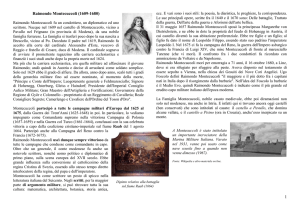
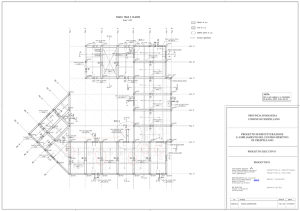
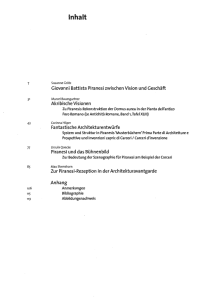
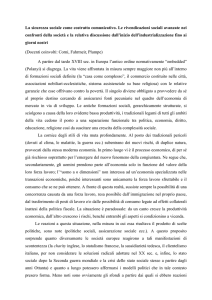

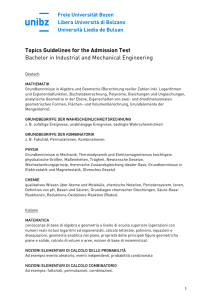
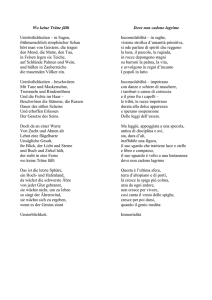
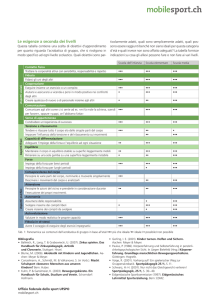
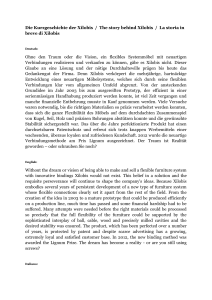
![Ricerca nr. 1 [MS WORD 395 KB]](http://s1.studylibit.com/store/data/000076742_1-2ede245e00e21c823e517529e1c3be46-300x300.png)
